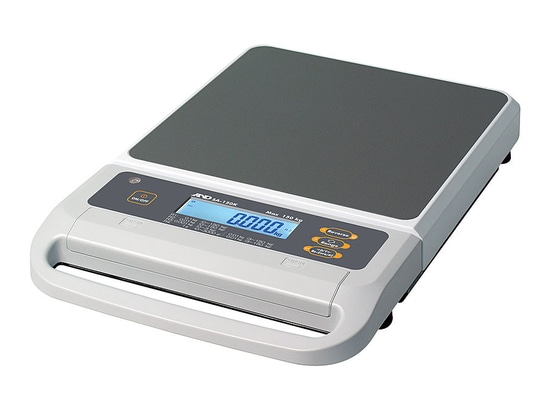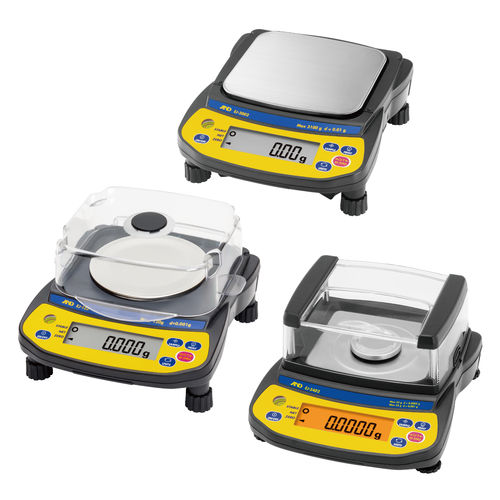
#Product Trends
Can Today's Load Cells Replace The Electromagnetic Force Restoration Method Of Precision Balances?!
Introducing the EJ series of compact precision balances
In 2014, A&D Company, Limited, a multinational manufacturer of measuring equipment for laboratory and industrial use, launched their first 1 mg balances that employed a load cell as the weight sensor, the EJ-123 (120 g × 0.001 g) and EJ-303 (310 g × 0.001 g). Now, they are adding two new, 10 mg models with larger capacities, EJ-1202 (1200 g × 0.01 g) and EJ-3002 (3100 g × 0.01 g), to offer a complete series of compact precision balances.
Previously, such high resolutions (1/120,000 to 1/310,000) were only realized by electromagnetic force restoration, the method most commonly adopted for laboratory balances, including microbalances. This method determines a mass from the amount of current required to generate the electromagnetic force on one side of a lever that equalizes with the mass placed on the other side. Today, however, A&D's EJ series challenges their established edge, offering users a way to spend less without compromising on precision.
The EJ series also provides functions and options that facilitate various kinds of weighing tasks. For example, the counting mode lets users count a number of small pieces of the same mass quickly, effortlessly and precisely. In percent mode, the weight can be displayed as a percentage of a reference mass, which is useful for target weighing or checking the sample variation. With the accumulation (M+) function, the balance can sum separate weighing results and display the total value, saving users from the hassle of performing the addition by themselves and reducing the risk of making errors. It also counts and displays the number of times weighing is performed.
Two kinds of data communication interfaces are available as options. One is the Quick USB interface, which allows sending weighing data to Microsoft Excel, Word, Notepad, etc., without installing any drivers or other additional software on a PC. The other is the RS-232C interface for bi-directional communication with a PC, printer or other peripheral devices. Using the latter, GLP/GMP/GCP/ISO compliant output of weighing or calibration results is also possible.
The density of a sample can be easily obtained with the 0.001 g models (EJ-123 & EJ-303). All that users are required to do is simply input the water temperature and weigh the sample in air and in water using the optional density determination kit. The balance will then automatically perform density calculation.
Please find more details on the A&D website at http://www.aandd.jp/.



